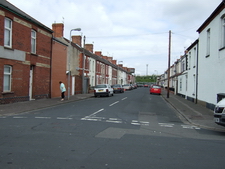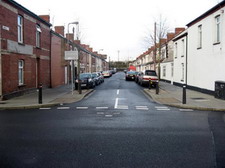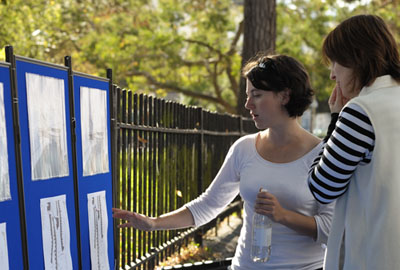
I’m really liking this Friday Follies blog entry-recipe hybrid. Just so you know.
Do you know about the foodie throw down over the best recipe for chocolate chip cookies? People are quite vigorously opinionated about which recipe yields the best cookie. In the beginning I didn’t put much stock in this (who could find fault with a basic chocolate chip cookie?) but now that my friends and I have tried a number of these recipes I have to say that I think this one from the New York Times really is the best, but be forewarned that it requires a bit of planning. Let me know what you think.
But on to the blog entry of the day: DIY Streets!


Somerset Street, Cardiff: before (left) and after (right)
(It’s hard to see the newly planted trees in the photo on the right, but they’re there!)
DIY Streets is a program run by Sustrans “that brings communities together to help them redesign their streets, putting people at their heart and making them safer and more attractive places to live. It’s an affordable, community-led alternative to the home zones design concept.” The idea is that locals get more actively involved in what their communities are like and have an opportunity to prioritize the issues they feel are most pressing.

Which street design do you prefer?
I’m not clear on what the exact order of events is, but the idea is that residents, DIY Streets staff, and local authorities work together to discuss potential alterations to their neighborhood streets and create a plan for accomplishing their goals. This process, called “community design” typically takes eight months to a year. At that point actual construction and changes get underway. While the initial raft of pilot projects (in 11 communities in England and Wales) took three years to complete, current projects are expected to be completed in under a year.
Of the eight featured pilot projects on their website, five (63%) listed “lack of street trees and other greenery” as a major issue with their streets and eight (100%) listed speeding traffic as a problem. One of the lesser known facts about urban trees is that they actually help slow down vehicular traffic to create more appropriate urban traffic speeds. Interesting.
I’m intrigued by this idea. On the one hand, I think it’s fantastic. On the other, does this save time and/or money — and do they end up with a better street in the end? There may be no way to measure that empirically, so in the meantime I want to just keep an eye on efforts like this and see how they do — I would love to see something like this succeed in the long term and be a viable option in communities on an international scale.
(Cookie image from the New York Times. All other images from DIY Streets — and they also have a Flickr page where you can see more of their recent work!)





Leave Your Comment